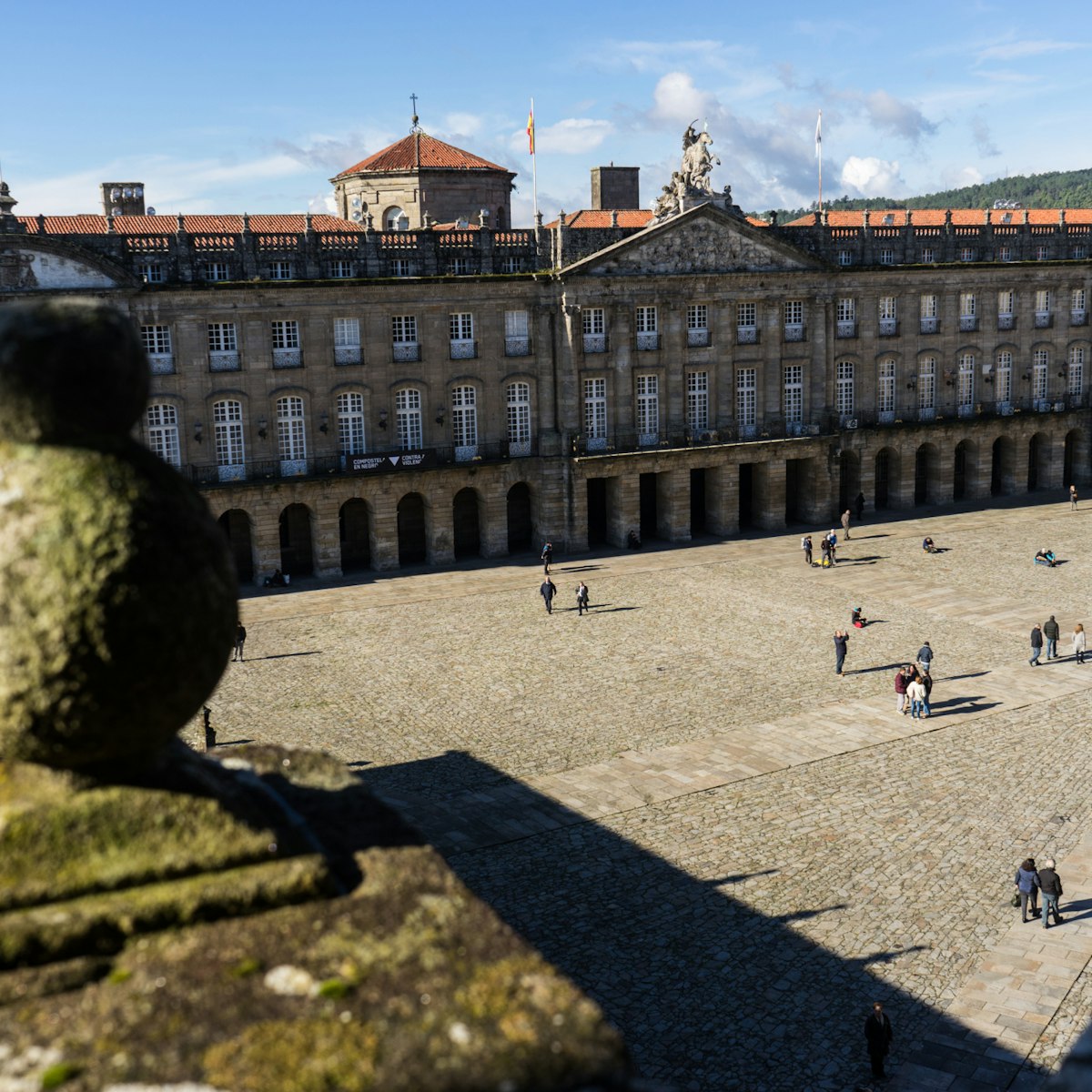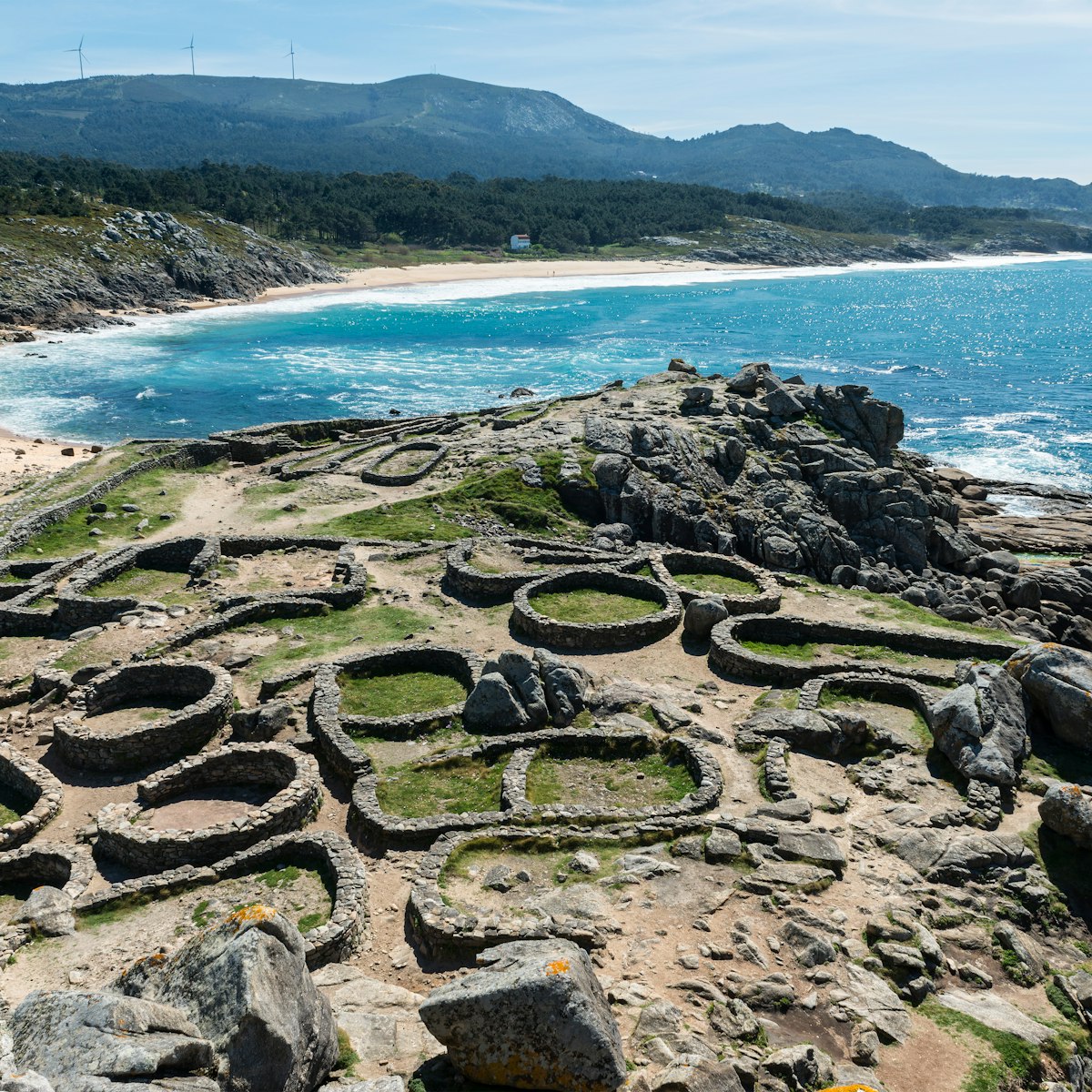Padrón is the last stop before Santiago de Compostela on the Camino Portugués pilgrim route, and pilgrims make a beeline for the Igrexa de Santiago, next to the Ponte do Carme over the Río Sar. Beneath the church's high altar stands a Roman sacrificial altar known as the Pedrón (Big Stone) – which gave Padrón its name. According to legend, the boat bearing Santiago's body was moored to the Pedrón on arrival.
Outside the church, statues of Padrón's two famous writers face each other from opposite ends of the long esplanade beside the river.



